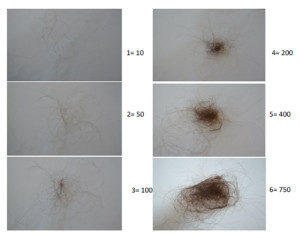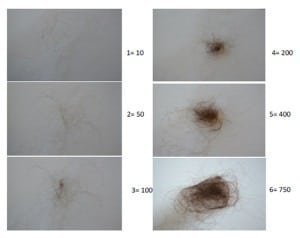How much is too much?
Female pattern hair loss (FPHL) is the most common form of hair loss in women and reduces quality of life for sufferers. It is characterised macroscopically by hair loss and balding on the mid-frontal scalp and microscopically by increased variation in hair fibre diameter, fewer hairs growing from individual pores, and hair follicle miniaturisation. When treatment is imitated early, these changes are partly reversible, however over time hair loss becomes irreversible. Early diagnosis increases the likelihood of successful treatment.
 Women normally shed between 50 and 150 hairs per day. Those who report excessive hair shedding may have an actual increase in hair fall, or they may instead have an increased awareness of normal hair shedding. The ‘hair pull test’ does not reliably discriminate between normal and excessive hair shedding. A tool to identify increased hair shedding would facilitate early diagnosis of FPHL, and allow treatment to commence before the process becomes irreversible.
Women normally shed between 50 and 150 hairs per day. Those who report excessive hair shedding may have an actual increase in hair fall, or they may instead have an increased awareness of normal hair shedding. The ‘hair pull test’ does not reliably discriminate between normal and excessive hair shedding. A tool to identify increased hair shedding would facilitate early diagnosis of FPHL, and allow treatment to commence before the process becomes irreversible.
To measure shedding, a visual scale was developed by dividing shoulder length hair into six bundles of different sizes. The number of hairs in each pile were counted and the piles were then photographed and arranged according to size (see Figure).
Click here to read more in the article published on 27 Dec 2015 by Dr Rodney Sinclair.







